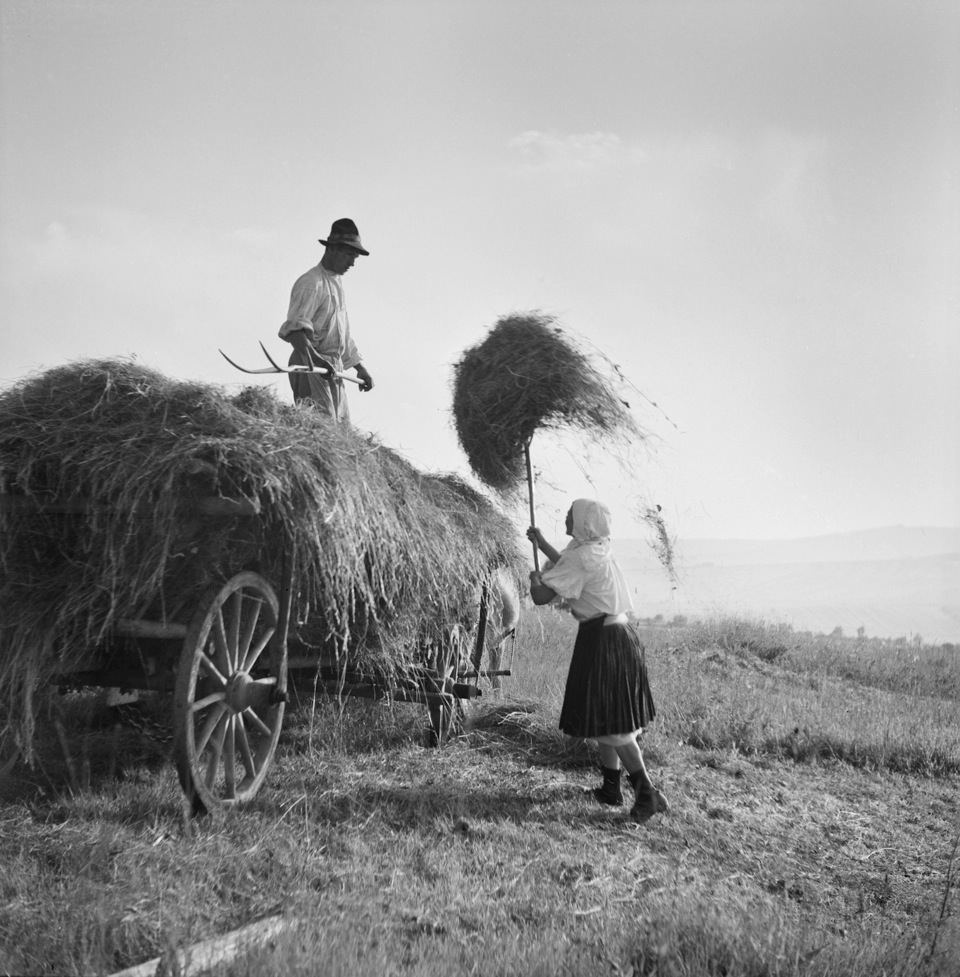The archives of the almost forgotten Ferdinand Bučina (1909–1994) are an interesting contribution to the politics and history of pictorial representation, to ethnography, and even to the relationship we have today with nature and with work. Bučina was a cinematographer and photographer, who also skilfully wrote the texts accompanying his visual essays. Whilst we find exhibitions of those who served as his example and his peers who focused on folklore and national history (e.g. Plicka, Martinček and Lukas), Bučina’s works have been relegated to the shelves of used bookstores. His exhibition spaces consisted of the pages of books and magazines published by the thousands. However, whether his photos were bought by pre-war periodicals or if he shot them for Socialist narrative publications, the people portrayed in them were intensively involved with the surrounding living world.
The core of the exhibition in the Josef Sudek Studio consists of Bučina’s series of photographs Vzpomínka na Javorník (Remembering Javorník), which he was preparing for book publication. During the Protectorate, Bučina found Moravian Horňácko to be an oasis going back to a different time. In Bučina’s photos taken in Javorník, archaeologist Zdeněk Smetánka identifies tools, clothing, and customs dating back several centuries. Thus these photos taken during WW II present us with images of rural life in the Baroque and the Middle Ages. Idyllic historical images, portrayed using the aesthetics of 1940s photography, remind us that even this work is a part of enormous technological changes – shifting human work and experience from the world of nature to a world of technical images and information.
